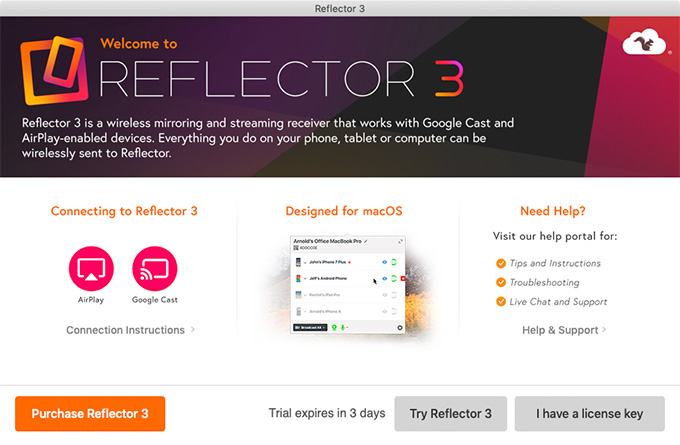

- Reflector 2 app how to#
- Reflector 2 app android#
- Reflector 2 app trial#
- Reflector 2 app license#
- Reflector 2 app mac#
Reflector 2 app how to#


It sounds complicated but it really isn’t! A really great walk-through for setting up Vysor can be found here.īesides utilizing Reflector 2 to model smartphone processes for students, here are some other suggested uses in the classroom: The setup process to utilize Vysor is a little more involved because you must enable developer options on your phone. In addition to this, the device must be plugged to your computer with a USB cord whereas Reflector 2 allows you and other users to connect wirelessly from anywhere in the room.
Reflector 2 app android#
Vysor is a screen mirroring tool that must be utilized through the Google Chrome browser and only works with Android based phones.
Reflector 2 app license#
If you’re not able to commit to purchasing a Reflector 2 license and are looking for a free version, you can check out Vysor. The audio can be a bit sensitive so make sure you are in a quiet space when recording. The program also allows you to record your screencasts. So if your students are a mix of Android and iOS users, you can display both.
Reflector 2 app mac#
After signing up, reflector sends you easy-to-follow instructions for mirroring your phone to your computer based on if you have a Mac or Windows machine.Īnother benefit of utilizing Reflector 2 is that it allows you to screencast multiple devices at the same time.
Reflector 2 app trial#
Reflector 2 also allows you to download a two-week trial in case you aren’t completely sure. So if you work for an organization and only want to buy one license, my recommendation would be to download it onto a computer that might be utilized by several teachers such as in a tech lab. The downside is when you purchase a license it is specific to one computer. The program is not free, but in my opinion, is worth every cent. Then download the program to your computer. To use Reflector 2, first, visit Reflector 2’s website. As a trainer, I use it to lead others through learning how to use smartphones and various apps. By connecting your computer to a projector, you can easily demonstrate the steps necessary to download an app or send a text message. Every action you take on your phone is displayed on your computer screen as well. Reflector 2 is a wireless mirroring program that allows you to mirror your phone screen onto a computer. This frustration could have been eased with Reflector 2. Not to mention that some students used Android and others iOS. While in the classroom, when I found an app I wanted my students to be aware of, I can remember painfully trying to walk students through finding the app in the app store, downloading it, opening it, signing in and then using it, all while circulating the room demonstrating from my tiny cell phone screen. But in order to fully benefit from these apps, students need to know how to utilize them, from download to daily use. There are loads of apps that can be extremely valuable in our students’ lives. And in fact, the two are certainly not mutually exclusive. As adult basic educators, I believe it is essential that we teach our students to utilize the tools they need to be successful in the real world whether that tool is the English language or a smart phone. As an early adopter of integrating mobile phones into instruction, Reflector 2 is a tool I desperately wish I would have discovered while I was still in the classroom.


 0 kommentar(er)
0 kommentar(er)
